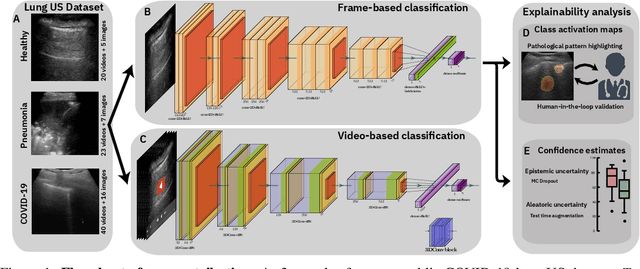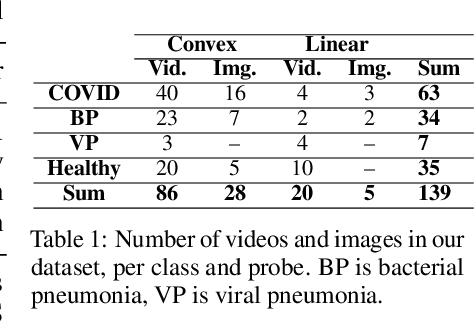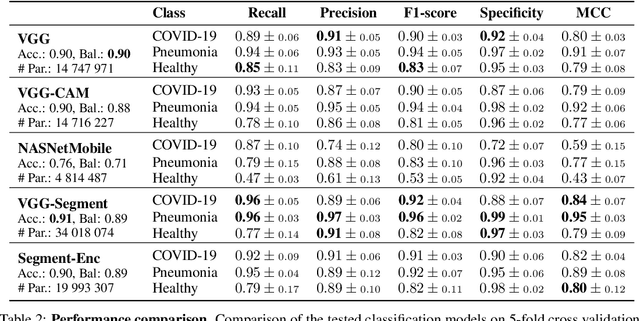Accelerating COVID-19 Differential Diagnosis with Explainable Ultrasound Image Analysis
Paper and Code
Sep 13, 2020



Controlling the COVID-19 pandemic largely hinges upon the existence of fast, safe, and highly-available diagnostic tools. Ultrasound, in contrast to CT or X-Ray, has many practical advantages and can serve as a globally-applicable first-line examination technique. We provide the largest publicly available lung ultrasound (US) dataset for COVID-19 consisting of 106 videos from three classes (COVID-19, bacterial pneumonia, and healthy controls); curated and approved by medical experts. On this dataset, we perform an in-depth study of the value of deep learning methods for differential diagnosis of COVID-19. We propose a frame-based convolutional neural network that correctly classifies COVID-19 US videos with a sensitivity of 0.98+-0.04 and a specificity of 0.91+-08 (frame-based sensitivity 0.93+-0.05, specificity 0.87+-0.07). We further employ class activation maps for the spatio-temporal localization of pulmonary biomarkers, which we subsequently validate for human-in-the-loop scenarios in a blindfolded study with medical experts. Aiming for scalability and robustness, we perform ablation studies comparing mobile-friendly, frame- and video-based architectures and show reliability of the best model by aleatoric and epistemic uncertainty estimates. We hope to pave the road for a community effort toward an accessible, efficient and interpretable screening method and we have started to work on a clinical validation of the proposed method. Data and code are publicly available.
 Add to Chrome
Add to Chrome Add to Firefox
Add to Firefox Add to Edge
Add to Edge